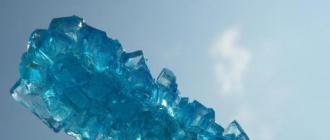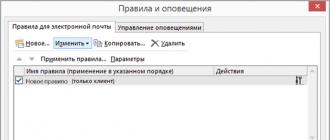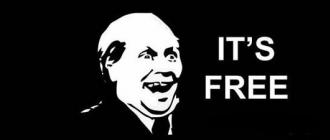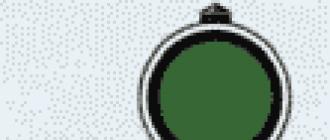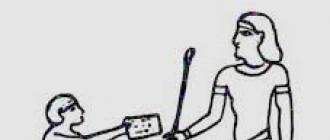And programs? When you visit a restaurant, you will be offered the current menu, from which you can choose the required dishes. Applied to the operating system and applications, "Menu" Is a list of operations that the user can choose to perform.
Windows main menu
In the main Windows menu (Windows7 is considered as the most common system at the time of this writing), you can select the programs you need to run them, open to access the documents that you saved on, access the operating system settings, get help and assistance on system, search for the ones you need.
Main menu opens by left-clicking on the "Start" button located in the lower left corner of the taskbar. In the menu that opens, in its left panel, there will be a list of programs that you launched last. To restart it, all that remains is to left-click on the application name.
To view all installed programs, click on the menu item "All programs"... A list of all installed programs on the computer will appear in the left pane in the form of icons or folders with the name of the application. To start the program, you need to click on its name. In the event that the name of the program in the main menu is located in a folder, then you need to open the folder by clicking the left mouse button. As a rule, the folder with the name of the program contains icons for its launch, uninstallation and the help file.

The search bar is located at the bottom of the left panel of the main menu. To search for the desired file, you need to enter its name and click the magnifying glass icon. The found file will be displayed in the left pane of the main menu.
In the right pane of the Windows main menu, there is a list that allows you to quickly access some operating system functions:
- Documents... This item of the main menu allows you to open a folder in which you can store documents.
- Images... The main menu item that gives access to the contents of the folder with graphic files (photos, drawings, etc.)
- Music... Opens the folder with the audio files stored in it.
- A computer... Clicking on this item of the main menu will open a window where all available storage media will be shown: logical drives and removable media.
- Control Panel... Access to basic Windows settings.
- Devices and Printers... Left-clicking on this item opens a window showing the presence of connected printers.
- Default programs... Gives quick access to setting programs that will process this or that file type by default. For example, in addition to the standard media player that comes with the operating system, you have installed a third-party player. Using this menu item, you can select that files with the .mp3 extension will be played only by this player, and all other types of media files, standard.
- Help & Support... Calling the help system of the installed operating system, in which you can learn about certain of its functions.

Programs, windows and documents menu
Programs developed for Windows have a standard interface in which the program menu is based on a single principle.
An interface or user interface is a set of tools, methods, and rules for interacting with a program or operating system.
This means that any program running in Windows has a standard appearance and standard controls. The menu in the program, which can be both horizontal and vertical, consists of menu items, the choice of which is done by clicking the left mouse button. Clicking on a menu item invokes an action or opens an additional list with items - a submenu.
Hovering the mouse cursor over a menu item makes it visually highlighted. It can be coloring or embossing a point. Menu commands that are not available (for which there are no prerequisites) are grayed out.
Vertical menu items, depending on the purpose, may have additional elements:
- To the left of a vertical menu item, there may be a dot that serves as a value switch.
- To the left of the item of the vertical menu, there may be a check mark showing the state of the mode, on or off.
- The triangle-shaped pointer to the right of a vertical menu item indicates the presence of an additional menu (submenu) for this item.

Context menu is a special kind of menu called by right-clicking on any object and showing a valid list of actions with this object.

When installing or removing programs on a computer, or changing the composition of operating system components and some software packages, the appearance or disappearance of items in the Main Menu is inevitable. These changes to the Main Menu reflect the change in your ability to use your computer. Main menu setting will allow you to navigate faster among installed programs and applications.
On Windows, there are two main menu view: the actual Start Menu and the Classic Start Menu, which differ both in appearance and in functionality.
The easiest way to add an item to the Main Menu is to drag the program or document icon onto the Start button. The created item will appear at the top level of the Main Menu above the dividing line that cuts off standard items from those added by the user. If you need to set some properties of a shortcut, it is more convenient to right-click on an empty space on the Taskbar and select Properties from the context menu that opens. You can also give the command Start - Control Panel - Taskbar and Start Menu. The Taskbar and Start Menu Properties dialog box opens. Click the Start Menu tab, switch the radio hotspot to the Classic Start Menu, and click the Customize button. In the Customize Classic Start Menu dialog box that appears, click Add to launch the standard New Shortcut wizard. The process of creating a shortcut will contain an additional step of selecting a folder in the Main Menu, into which the shortcut will be placed.
To remove an item from the Main Menu, the easiest way is to open this menu and right-click on the required item. In the context menu that opens, select Delete. Another way is to open the Taskbar and Start Menu Properties dialog box, select the Classic Start Menu from the Start Menu tab, and then click Customize and then Uninstall. In the Delete Shortcuts and Folders dialog box, you must specify the item to delete.
Deleted main menu items, as well as other deleted files, are automatically placed in the Trash. By opening the Trash, you can undo the erroneous operation.
Since the Main Menu items are shortcuts, changing the property of the Main Menu item means changing the property of the corresponding shortcut. To view or change the properties of a shortcut located in the Start menu, right-click on the required item in the Start menu and select Properties in the shortcut menu that appears.
As with creating a folder, there is no easy way to rename a Main Menu item. To carry out this operation, it is necessary to resort to manual modification of the Main Menu: Start - Control Panel - Taskbar and Start Menu - Start Menu Tab - Classic Start Menu - Customize button, in the appeared Classic Start Menu Customization dialog box »Click the Manual button and in the Explorer window that appears, rename the desired item in the Main Menu.
Special main menu value is that it is available almost at any time, regardless of which programs are running and which documents are open. Numerous windows can close desktop objects and make it inconvenient to use folders, open documents and launch programs, while the Start button is always visible on the monitor screen. Navigation through the Main Menu items is performed by simply hovering the mouse pointer and then pressing the "Start" button.
Menu Windows
The Windows operating system uses several types of menus.
1. Main menu (menu of the "Start" button) is shown in Fig.1. It is invoked by clicking on the "Start" button and its appearance depends on the user's settings. Its options:
§ Completion of work – completion of work, restart the computer, login with a different password
§ Execute - you can load for execution a program that is absent in the "Programs" menu
§ Help & Support - you can get help on the Windows system
§ To find - allows you to find information on this computer or on the Internet
§ Customization - allows you to change the parameters of devices connected to this computer
§ Documents - opens a list of the last 15 documents opened on this computer under this password
§ Programs - opens a list of programs that are installed on this computer for downloading.
The rest of the menu options speak for themselves.
2.
 System menu
(call - clicking on the window icon in the title bar (left picture in the blue window line)). Allows you to manage Windows windows using the keyboard (if the buttons in the upper right corner of the window are not visible (Minimize, Maximize, Close buttons)). Can be used if the mouse does not work for some reason.
System menu
(call - clicking on the window icon in the title bar (left picture in the blue window line)). Allows you to manage Windows windows using the keyboard (if the buttons in the upper right corner of the window are not visible (Minimize, Maximize, Close buttons)). Can be used if the mouse does not work for some reason.
3.
 Command menu
applications (in all application windows the menu bar). The number and content of the command menu options vary from program to program. For example, in a word processor program Word these are the options "file", "edit", "view", "insert", "format", "service", "table", "window", "help".
Command menu
applications (in all application windows the menu bar). The number and content of the command menu options vary from program to program. For example, in a word processor program Word these are the options "file", "edit", "view", "insert", "format", "service", "table", "window", "help".

4. Object command menu (file_help_view_?). Shown in Figure 4 for the "My Computer" window
5.
 Pictographic menu
... You can also find other names: tool menu, tool menu. The tool menu essentially duplicates the command menu, but unlike it, it provides direct access to the corresponding option. When using the command menu, you would have to make a few clicks to get to the desired option.
Pictographic menu
... You can also find other names: tool menu, tool menu. The tool menu essentially duplicates the command menu, but unlike it, it provides direct access to the corresponding option. When using the command menu, you would have to make a few clicks to get to the desired option.

 6.Context menu
(Fig. 6.) is always invoked by right-clicking. For each object, the context menu has a different look, therefore it is also called context-sensitive. This type of menu is probably the most used one. Almost all operations on objects can be done using the context menu.
6.Context menu
(Fig. 6.) is always invoked by right-clicking. For each object, the context menu has a different look, therefore it is also called context-sensitive. This type of menu is probably the most used one. Almost all operations on objects can be done using the context menu.
7.Popup (swing) menu (fig. 7). It is called by clicking on the corresponding icon. Suboptions are selected in the same way as for other types of menus.

The main menu provides access to almost all Windows functions and allows you to perform work related to launching programs, getting help, finding and opening documents, setting up the system.
Purpose of the Main Menu Items:
Documents
This item lists the last 15 documents that the user has recently worked with. If you click on a document or file associated with any application in this submenu, then it will be loaded, and the selected file will be opened and ready to work.
Customization
Provides quick access to the Toolbar, with which you can change the hardware configuration and user settings. The Settings item also opens access to the Printers folder, and finally, this item allows you to open the Properties window of the Taskbar.
Search
Allows you to find files and folders on any available disk device in local and external networks. You can search for a file not only by name, but also by the date of creation, by the contained text fragment, or by file type.
reference
Opens the Windows 98 Help system, which contains comprehensive information on all system features and how to use them.
Execute
Allows you to enter a command line with which you can execute a DOS command, launch an application, or open a folder by entering the full file name.
Completion of work
Allows to shut down correctly with Windows 98. This first saves all open files or displays messages in which the system asks you to do this. Then all temporary files that are not needed for the further operation of the system are deleted. When you select the Shutdown item, you are given the opportunity, instead of shutting down the computer, to reboot the system or return back to Windows or DOS.
In the course of the description of the Main Menu items, I had to use not yet described concepts, such as the Taskbar, Explorer, My Computer, Recycle Bin, Network Neighborhood, Communication.
The control panel provides easy access to the Registry. Registry Is a Windows 98 database that stores information about user settings, hardware configuration, installed programs, application and file type matching, and other system information. The configuration objects are accessed through the icons on the Control Panel. Double clicking on the icon opens access to the relevant information for its modification or addition.
File Explorer, My Computer, My Network Places Are tools built into Windows 98 for working with files. They are used to find files, folders, or networked computers. Explorer is launched from the Programs submenu of the Main Menu.
Basket. This is where deleted files are automatically placed. You can optionally either restore them from there, or throw them out of the Trash. This tool protects you from accidentally deleting the files you need.
Figure:2.22. Windows 7 main menu
When you click on the Start button on the Taskbar, the Windows 7 main menu appears (Fig. 2.22). This menu displays installed applications and contains commands for system settings and information retrieval.
On the left side (on the left pane) of the rectangle that appears, a short list of applications that have been used recently or which, according to the operating system developers, you will often use, are displayed. Icons are visible to the left of the application names. They add personality to the application and allow you to quickly find it with your eyes among others. To launch any of these applications, simply click on its name or icon with the mouse.
However, as said, this is a short list of applications. To see all installed (that is, ready-to-use) applications, click on the All programs item. As a result, the short list of applications in the left pane of the Main Menu will be replaced with the full list of installed applications (Fig. 2.23). Here you can see both applications with their own icons (menu commands), and folders that contain applications or other folders with icons. You can run the application by clicking on its name with the mouse.

Figure: 2.23. Complete list of installed applications
If you do not remember or do not know what a particular application is for, you can move the mouse pointer over its name and do not move the mouse for a while. At the same time, a tooltip may appear describing the purpose of the application.
In addition to applications with their own icons, this list also contains folders with icons
These folders can contain applications or other folders. When you click on the name of a folder, it opens and a list of its contents is displayed. For example, in Fig. 2.24 shows the expanded folder Standard,when it was clicked on.

Figure:2.24. Folder Contents Standard
To launch the application, you need to click on its name or icon. When the selected application is launched, the Main Menu will automatically disappear from the screen.
In addition to the list of applications, the Main Menu contains other panels (rectangular areas). To the right of the list of applications is a list of commands that allow you to invoke some useful functions. Let's consider each point separately.
Documents - opens a window that displays the contents of the Documents folder, automatically created by Windows 7 for you. In it you can store electronic documents (files with text, tables).
Pictures - opens a window displaying the contents of the Pictures folder, automatically created by Windows 7 for you. In it you can store various images such as photographs.
Music - opens a window displaying the contents of the Music folder, which was automatically created by Windows 7 for you. Here you can store music files.
Games - opens a window where the standard games included in Windows 7 are collected. Any of them can be launched by double clicking on the icon or name.
Computer - Opens a window that lists all logical drives available on your computer and all removable media devices (floppy disk drive, CD drive, DVD drive).
Control Panel - brings up the Windows 7 operating system settings window. We will consider some of these settings in more detail later.
Devices and Printers - opens a window with a list of installed printers.
Default programs - allows you to configure the call of programs that are launched by default to process files of various types or when performing some standard actions.
Help and Support - Allows you to access the Windows 7 Help system.
In the lower left part of the Main Menu, there is a field for searching various files and programs located on your computer. The keyboard cursor is already blinking in this field, so you can immediately enter the desired file name or part of it. In the process of entering, preliminary search results will be displayed in the field above, where there was a list of applications (Fig. 2.25). If the file or program you are looking for appears in this list, you can click on it with the mouse. The file will open for viewing or editing, and the program will start.

Figure:2.25. Find files
You can remove the Main Menu from the screen by clicking the button again.
Start (Start) or by pressing the Esc button on the keyboard (located in the upper left corner of the keyboard).
Setting language switching when entering text
As already mentioned, you can switch the input language either by clicking on the language indicator and selecting the desired value from the menu that appears (see Fig. 2.21), or by a key combination on the keyboard.
You can use the default combination, or you can specify a different one. Click rightby clicking on the indicator. In the menu that appears (Fig. 2.26), select the Parameters command. This will open a window with various settings for the languages \u200b\u200bused. You need to go to the Keyboard Switching tab, for which click on its name.

Figure: 2.26. Opening the language settings window
Click the Change keyboard shortcut button and in the window that appears, select the one you need from the list of shortcuts. A dot should appear near the selected value. Then click on the OK button.

Figure:2.27. Language settings window

